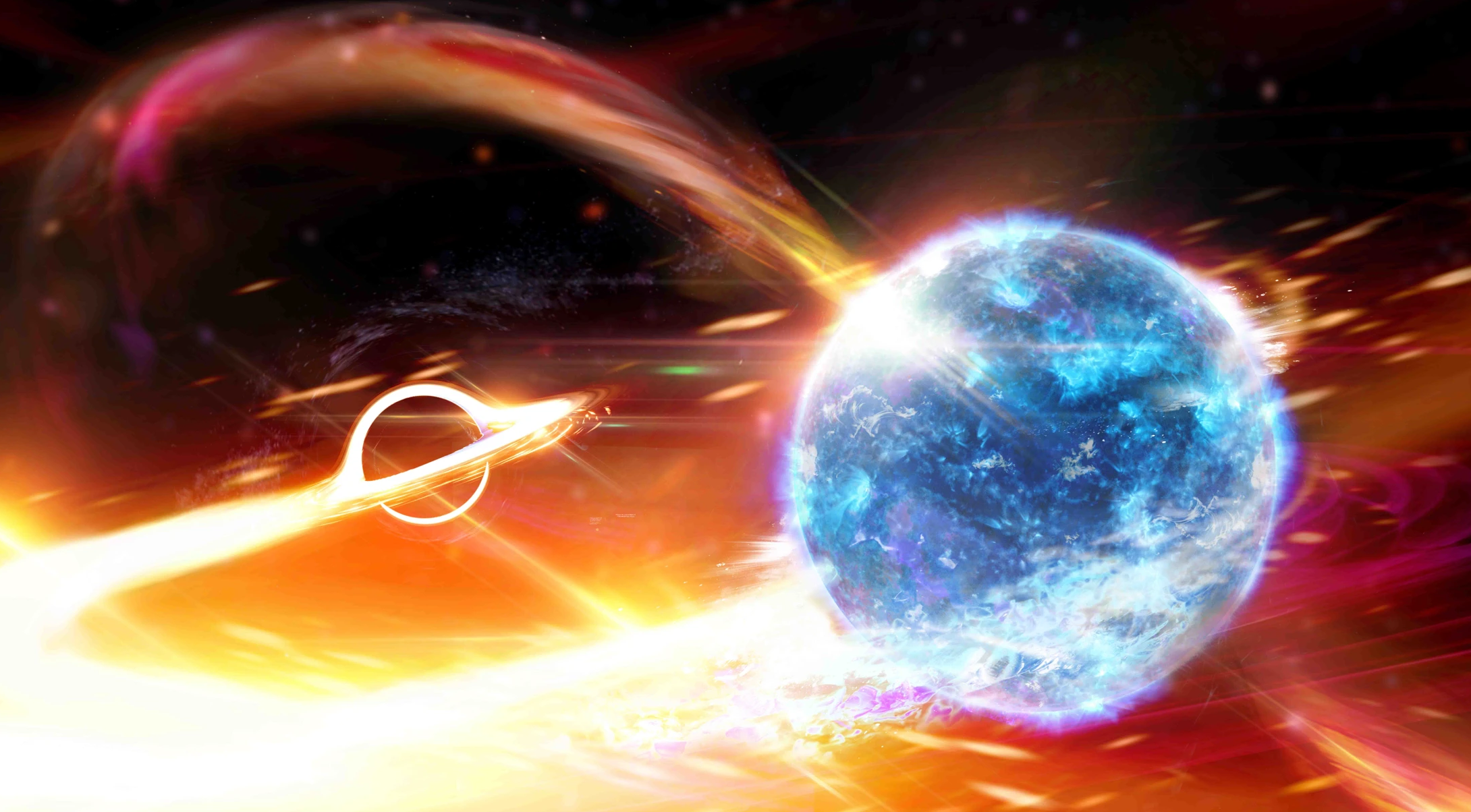
An enormous black hole devoured an ultra-dense star, snuffing it out, and creating a ripple in space-time which reached our planet.
It’s the first time such an event has ever been detected, say scientists from The Australian National University (ANU).
Neutron stars are super-dense remnants of dead stars - and the ‘ripple’ from the star’s demise travelled 5312 million trillion miles to reach our planet.
Ripples in space time known as gravity waves were picked up by detectors in the United States and Italy on August 14 this year.
The actual event happened about 900 million years ago, but the gravity waves took that time to reach our planet, the scientists say.
READ MORE FROM YAHOO
Boo, the famously cute dog, has died ‘of a broken heart’
Cute or creepy: why humans love some species, loathe others
Meet Kiera, the world’s first Li-Liger
Professor Susan Scott, from the ANU Research School of Physics said, ‘About 900 million years ago, this black hole ate a very dense star, known as a neutron star, like Pac-man, possibly snuffing out the star instantly.
‘Scientists have never detected a black hole smaller than five solar masses or a neutron star larger than about 2.5 times the mass of our Sun.
‘Based on this experience, we’re very confident that we’ve just detected a black hole gobbling up a neutron star. However, there is the slight but intriguing possibility that the swallowed object was a very light black hole — much lighter than any other black hole we know about in the universe. That would be a truly awesome consolation prize.’
‘The ANU SkyMapper Telescope responded to the detection alert and scanned the entire likely region of space where the event occurred, but we’ve not found any visual confirmation.’
Scientists are still analysing the data to confirm the exact size of the two objects, but initial findings indicate the very strong likelihood of a black hole enveloping a neutron star.


Be the first to comment